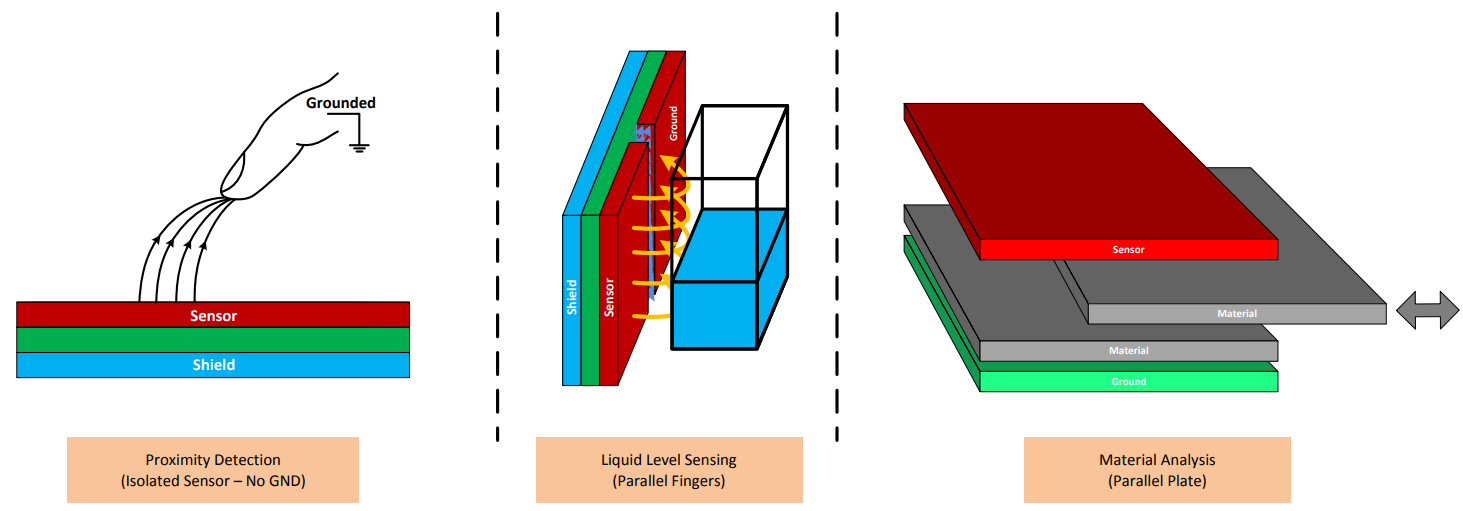SLYA048B March 2020 – June 2021 FDC1004 , FDC1004-Q1 , FDC2112 , FDC2112-Q1 , FDC2114 , FDC2114-Q1 , FDC2212 , FDC2212-Q1 , FDC2214 , FDC2214-Q1 , LDC0851 , LDC1001 , LDC1041 , LDC1051 , LDC1101 , LDC1312 , LDC1312-Q1 , LDC1314 , LDC1314-Q1 , LDC1612 , LDC1612-Q1 , LDC1614 , LDC1614-Q1 , LDC2112 , LDC2114 , LDC3114 , LDC3114-Q1
- Trademarks
- 1Inductive and Capacitive Theory of Operation
- 2FDC: Capacitive Level Sensing
- 3LDC: Inductive Touch Buttons
- 4LDC: Incremental Encoder and Event Counting
- 5LDC: Metal Proximity Sensor
- 6Revision History
1.2 Capacitive Sensing Theory of Operation
TI's FDC1004 uses a traditional switched-cap approach to capacitive sensing. It includes an active shield driver that helps concentrate fields to a desired direction. This is useful in liquid sensing applications if the engineer only wants to monitor the direction of the liquid instead of the added effects of human hands or other parasitic capacitances in the area.
The sensor electrode for a liquid level sensing system consists of both a sense and ground electrode. The device measures the fringe capacitance between the two electrodes, which can vary as the dielectric (or level of liquid) varies.
 Figure 1-3 Capacitive Sensing Applications
Figure 1-3 Capacitive Sensing Applications